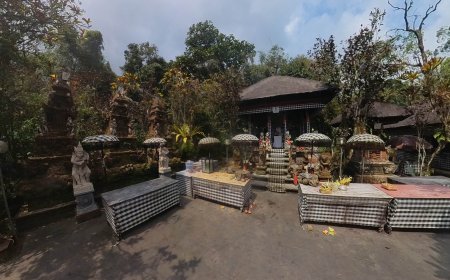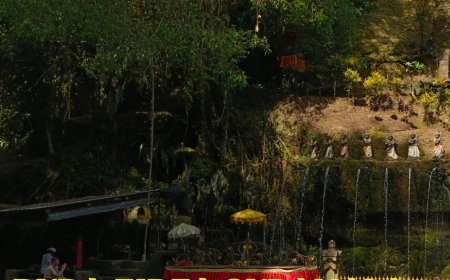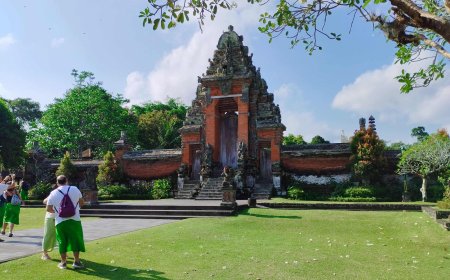Tracing the Spiritual Heritage of Indrakila Temple: The Ancient Sanctuary of Bali's Kings
Indrakila Temple, located in Dausa, Kintamani, Bali, is a sacred place that served as a meditation site for the kings of Bali. Situated at an elevated location, this temple offers tranquility and serenity amidst the stunning natural landscapes. It is a sanctuary where people seek spiritual meaning and deep connections.
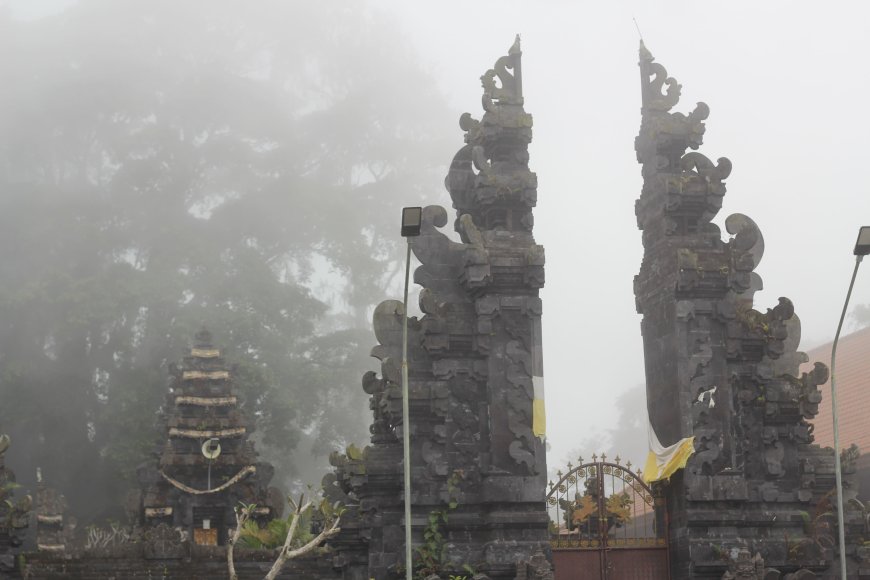
Indrakila Temple is situated in the village of Dausa, Kintamani, approximately 40 kilometers north of the city of Bangli, atop a small hill. While there is no clear written source regarding the temple's history, there are indications from inscriptions that suggest its construction during the reign of King Jayasakti in Bali around 1133-1150 AD. It was built with the purpose of serving as a meditation site for the ancient kings of Bali. According to local folklore passed down through generations, Indrakila Temple is associated with an episode from the Mahabharata, involving the meditation of Arjuna, one of the Pandava heroes, on Mount Indrakila.
A leader must possess strength to fulfill their weighty responsibilities and provide benefits to their people. The Yajurveda Mantra emphasizes the importance of a leader having strong self-awareness and unwavering determination. A leader with self-awareness and a resolute heart receives divine support to enhance the lives of their people, both physically and spiritually, much like how Arjuna engaged in meditation before facing the great battle of Kurukshetra.
Indrakila Temple may have been established with this background in mind. The king sought to prepare himself for the demanding responsibilities of leadership through meditation and self-discipline. As a leader, he would inevitably face various disruptions, challenges, temptations, and obstacles in the execution of his duties, especially as a king with vast power and territory.
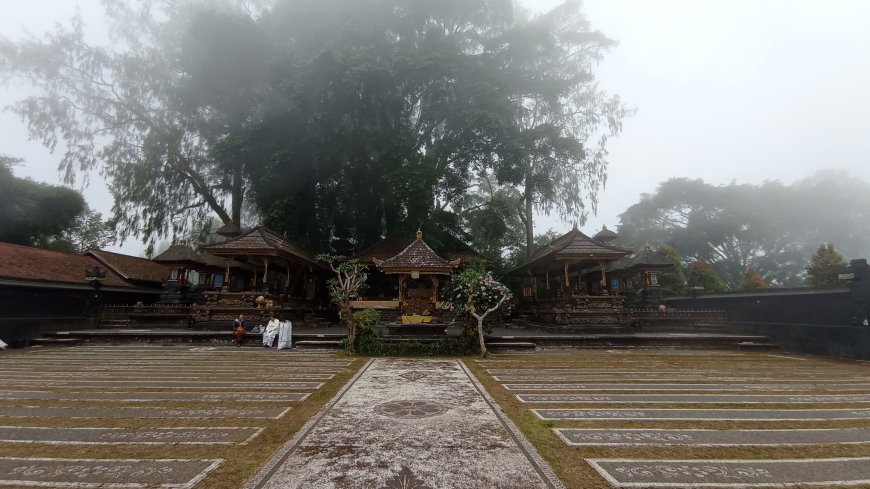
Indrakila Temple Utama Madya (Source : Author's Collection)
Indrakila Temple consists of three main sections, known as tri mandala, in its structure. The innermost part, or jeroan, is where you'll find a large banyan tree providing dense shade. Next to it, there's a unique cempaka seliwah tree, which bears two types of flowers, creating a truly magical atmosphere. Under the shade of these trees, a series of shrines forms an inverted "U" shape.
This main area also includes the Padmasana shrine with three chambers used for worshiping Ida Betara Tiga Wisesa. To the south, there's a stupa-shaped shrine used for worshiping Ida Betara Ciwa Bhuda. Additionally, you'll find the Lingga Yoni, symbolizing fertility and prosperity.
In the middle section, known as madya mandala or jaba tengah, there are two rows of gong pavilions separated into nine sections by partitions. A spacious area separates these two rows of gong pavilions. The outermost part, or jabaan, is the area surrounding the temple premises, offering beautiful views.
It appears that the story of Arjuna's meditation on Mount Indrakila inspired the establishment of Pura Indrakila as a place for ancient Balinese kings to meditate. Pura Indrakila was built on a hill to replicate Mount Indrakila in India, where Arjuna meditated. The primary shrine in Pura Indrakila is the Padmasana with three chambers, symbolizing reverence for Sang Hyang Tiga Wisesa or Sang Hyang Tri Purusa, the supreme soul of the Tri Loka.
The worship of God as Sang Hyang Tiga Wisesa aims to strengthen the spiritual dimension so that humans living in Bhur Loka don't engage in actions that disrupt the balance in Bhuwah and Swah Loka. At that time, there was an understanding that human mistakes in governing life in Bhur Loka could disturb the conditions in Bhuwah and Swah Loka.
In the modern era, this understanding has been substantiated. Activities such as using machinery that emits polluting smoke have polluted the atmosphere. Polluted space has indeed caused various diseases and greatly disrupted the lives of plants, animals, and humans on Earth.
The worship of God as Sang Hyang Tri Purusa reflects the belief that God is present in all realms: Bhur Loka, Bhuwah Loka, and Swah Loka. He is regarded as the supreme soul known as Batara Siwa in Bhur Loka, Batara Sada Siwa in Bhuwah Loka, and Paramasiwa in Swah Loka.
Initially, Indrakila Temple was in a state of disrepair and has undergone several renovations, expansions, and additions to shrines. The first renovation took place between 1961-1963, followed by ceremonies as per the customary traditions for temples undergoing repairs and expansions.
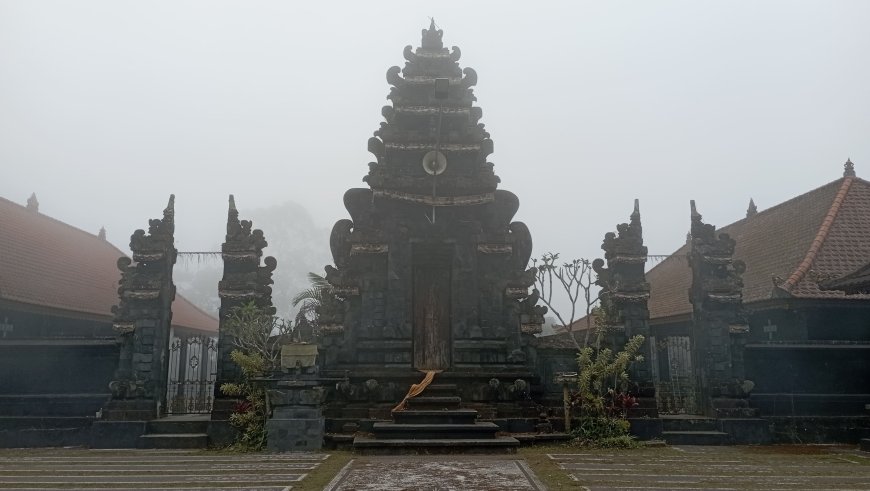
Indrakila Temple Madya Mandala (Source : Author's Collection)
According to the explanation provided by the temple's caretaker, Indrakila Temple is a Pura Dang Kahyangan that falls under the category of Kahyangan Jagat. The primary function of Pura Dang Kahyangan is to serve as a place for individuals to learn and practice spirituality under the guidance of a spiritual teacher. The goal is to strengthen one's inner self and live in accordance with their swadharma, based on their Asrama (stage of life) and Varna (social class). The temple's piodalan ceremony is held every Purnama Sasih Kapat.
Indrakila Temple has undergone several renovations and now houses numerous shrines that originate from various Pura Kahyangan Jagat in Bali. Examples include Gedong Limas Catu and Limas Mujung, which depict connections with the deities of Besakih and Batur. The temple also contains several Meru Tumpang Tiga and Pelinggih Gedong whose functions are still in need of further study.
Nevertheless, the primary role of Pura Indrakila remains as a Pura Dang Kahyangan used by kings and leaders as a place to train and strengthen themselves through spiritual practices like olah tapa. This enables them to become effective leaders in advancing the well-being of their people, both physically and spiritually.



















































